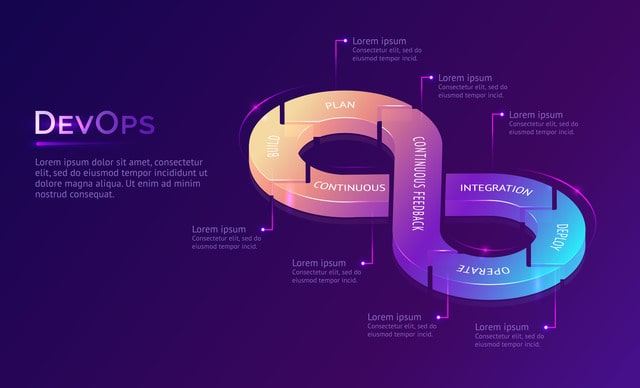Should Startups Use Continuous Deployment? Explained
Table of Contents
Continuous deployment is deploying code every time a developer checks in changes to the source code repository. DevOps teams can use continuous deployment to increase speed and efficiency by getting new features out faster, without having to wait for QA or other departments before moving on. But should startups use continuous deployment?
Benefits of Continuous Deployment
Some of the benefits of using continuous deployment include:
– Increased speed and efficiency – getting new features out faster without waiting for other departments.
– Streamlined DevOps pipeline – one pipeline for all, regardless of role or department.
– Automated governance and guardrails – ensuring code quality and compliance throughout the process.
– Reduced cloud costs – optimizing cloud usage by taking artifacts to production.
– Manage feature flags within pipelines – controlling when features are released to customers.
Drawbacks of Continuous Deployment
There are a few drawbacks to consider before implementing continuous deployment:
– There may be a higher risk of errors due to the constant code push.
– DevOps engineers need to ensure that pipelines are well configured and automated to reduce overhead.
DevOps teams may not have enough time for other tasks, like security or performance testing, because they always push out new features.
AI/ML-Driven workflows:
DevOps teams can use continuous deployment to increase speed and efficiency by getting new features out faster, without having to wait for QA or other departments before moving on. But this can be especially beneficial for AI and machine learning teams, who may have stricter requirements around data security and version control. DevOps pipelines can help ensure that data is adequately tracked and monitored at every step of the process, from development to production.
This also helps create a more seamless experience for developers, who don’t have to worry about different workflows depending on which part of the company they are working in. All development happens in one pipeline, regardless of team or project.
Automated Governance and Guardrails:
Automated governance and guardrails can help keep everything running smoothly while taking artifact to production ensures that code doesn’t get lost in translation. And by optimizing cloud costs, DevOps teams can make sure their resources are being used in the most efficient way possible.
Managing feature flags within pipelines can also help teams quickly and easily test new features before they are released to the general public. DevOps teams have many options at their disposal, and it’s important to find the right tools for the job to maximize efficiency and productivity.
A continuous deployment is an invaluable tool for startups and businesses of all sizes. It can speed up development time, improve data security, create a more developer-friendly experience, and optimize cloud costs. By using DevOps pipelines, companies can ensure that their codebase is always safe and up-to-date. And with careful planning and execution, DevOps teams can use continuous deployment as a way to improve their product and increase their bottom line.
Taking Artifact To Production:
The DevOps team has finished coding the next feature. But before deploying it to production, they need to make sure that everything is working as expected by taking their artifact all the way through the pipeline and into production. Once complete, this process gives DevOps teams a chance to test out new code in real-world conditions without exposing any customers or users until it’s ready for prime time.
Once DevOps teams are confident that everything works properly, they can release these changes with confidence, knowing that there will be no problems along the way. Any issues will emerge quickly due to continuous deployment practices, making them easier to diagnose and solve right away than later on when development slows down considerably after launch day. Hence, developers have a lot of incentive to use DevOps pipelines that take artifacts from development into production.
Optimizing Cloud Costs
DevOps teams that use continuous deployment should also look for ways to optimize cloud costs because it can help them get the most out of their resources while keeping things efficient. DevOps pipelines need to take artifacts from development into production and automate governance and guardrails, so there is no room for error when deploying new code. Keeping a close eye on feature flags, specifically how they are managed within DevOps processes, can help businesses easily test new features before releasing them to customers or users in general. By taking all these factors into account, DevOps teams have many options at their disposal, making it easier to find tools that match specific needs rather than wasting time trying different setups until something works properly.
Manage Feature Flags within Pipelines:
Feature flags are an essential part of DevOps pipelines and should be managed accordingly. Businesses can control when new features are available to customers and users by using feature flags. This helps DevOps teams test out new code without worrying about the potential consequences. And since feature flags can be controlled through DevOps pipelines, it’s easy for businesses to ensure that everything is working as intended before deploying changes to production.
Conclusion:
Software development for DevOps is not easy. It takes a lot of resources to get it right, but the benefits are well worth it in the end. DevOps helps you release new features faster than ever before without sacrificing stability or security so your users can enjoy your product sooner rather than later.
To start off with continuous deployment (CD), developers should follow these guidelines:
– Deploy changes frequently
– Make small incremental changes
– Automate everything possible!
Everything from testing all the way up to deploying code into production needs to be automated if they want their development process streamlined enough that they won’t waste time manually doing things over and over again. Then when something fails due to human error or some other unforeseen issue, DevOps teams will be able to identify the problem and make quick, simple changes quickly.




